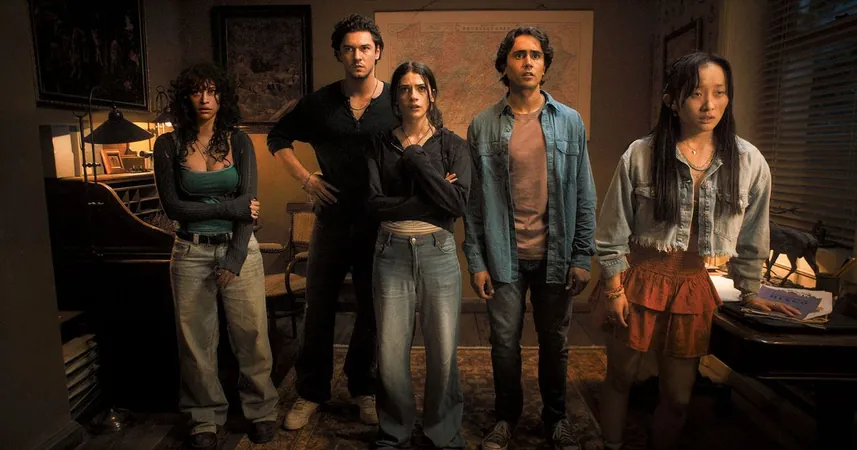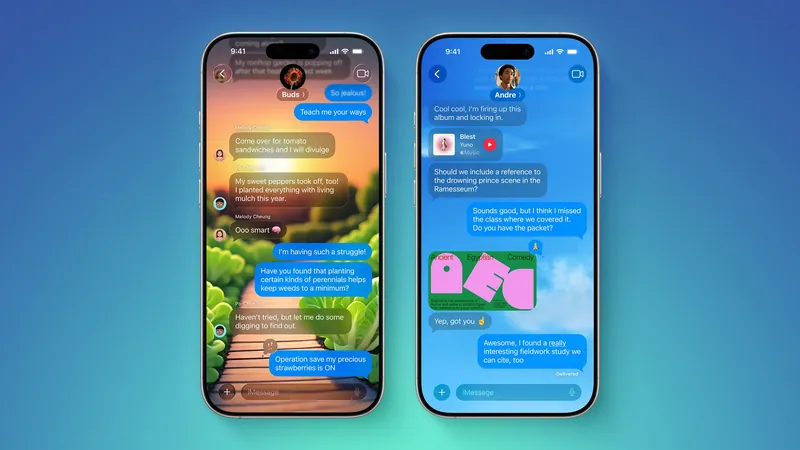
Until Dawn: A Hilariously Twisted Take on Trauma Horror
2025-04-25
Author: Wai
Spoiler alert! If you haven't delved into the chilling world of Until Dawn, be prepared: the 2025 film adaptation offers a fresh yet perplexing experience, even for fans of the beloved 2015 game. Directed by David F. Sandberg and penned by Gary Dauberman and Blair Butler, Until Dawn veers off from the original narrative—what begins as a classic slasher quickly transforms into an unpredictable blend of horror and humor, reminiscent of Cabin in the Woods.
The story follows a group of friends—Clover, Max, Megan, Nina, and Abel—returning to Glore Valley to unravel the mystery behind Clover's sister Melanie's disappearance. Their chilling adventure kicks off when a suspicious gas station attendant foreshadows the horrors awaiting them. Shortly after discovering a hauntingly abandoned visitor center filled with missing persons flyers, the masked killer makes his grim entrance.
But hold on! The horror is just getting started. In a shocking twist reminiscent of Groundhog Day, the group finds themselves caught in a time loop: after they are viciously killed, the night resets. With each cycle, their physical wounds echo their gruesome deaths, and an array of monstrous threats—including witches and wendigos—await them.
The relentless pace of killings might risk monotony, but the creative gore and sharp humor keep the shocks fresh. A standout moment occurs when the group hilariously watches video recordings of their grisly deaths, which have been preserved on their phones. Their fate escalates in a memorable scene where they jokingly drink from a bathroom sink only to explode in a gory shower of blood—proof that laughter lurks amidst terror.
As the friends investigate their haunted surroundings, they uncover the dark history of Glore Valley. The place was once a prosperous mining town, swallowed whole by disaster. Their repeated deaths tie back to a sinister figure—the gas station attendant, Dr. Alan Hill, who revels in studying their fears and suffering.
In a climactic showdown, Clover confronts her inner demons and the wicked doctor, revealing the genuine core of her struggles: battling trauma stemming from her sister's disappearance. The closing acts emphasize that laughter and horror can coexist, culminating in a liberating resolution where Clover confronts her past—even if it means facing her sister's monstrous form.
While the film's explanations may come across as muddled, it embraces its absurdity with a tongue-in-cheek attitude. Instead of solemnly dissecting trauma like many modern horror flicks, Until Dawn leans into the fun, proving that facing fear can also be entertaining. After vanquishing Hill, Clover and her friends emerge from the ground, survivors in their own right.
But the movie leaves us with an unsettling ending, revealing that the wicked Dr. Hill is still lurking, now monitoring the next batch of unsuspecting victims. Is this a poignant commentary on the lingering nature of trauma? Perhaps, but more likely, it sets the stage for a sequel where fresh faces meet their inventive doom. One thing's for certain: in the world of Until Dawn, laughter—and horror—go hand in hand.



 Brasil (PT)
Brasil (PT)
 Canada (EN)
Canada (EN)
 Chile (ES)
Chile (ES)
 Česko (CS)
Česko (CS)
 대한민국 (KO)
대한민국 (KO)
 España (ES)
España (ES)
 France (FR)
France (FR)
 Hong Kong (EN)
Hong Kong (EN)
 Italia (IT)
Italia (IT)
 日本 (JA)
日本 (JA)
 Magyarország (HU)
Magyarország (HU)
 Norge (NO)
Norge (NO)
 Polska (PL)
Polska (PL)
 Schweiz (DE)
Schweiz (DE)
 Singapore (EN)
Singapore (EN)
 Sverige (SV)
Sverige (SV)
 Suomi (FI)
Suomi (FI)
 Türkiye (TR)
Türkiye (TR)
 الإمارات العربية المتحدة (AR)
الإمارات العربية المتحدة (AR)